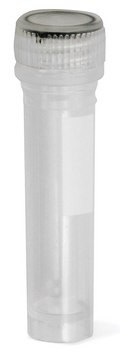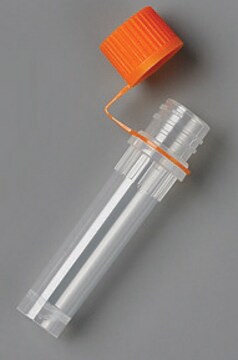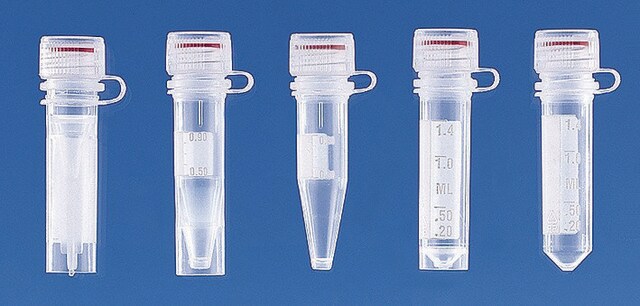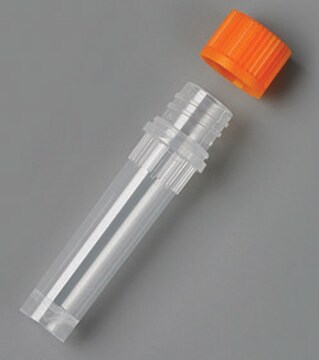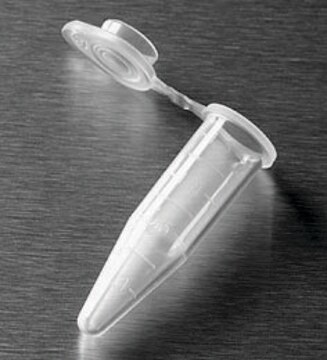CLS430909
Corning® microcentrifuge tubes with screw cap
1.5 mL microcentrifuge tube, polypropylene, w/ attached screw cap, w/ 0-ring, sterile, natural, 500/cs
Sinonimo/i:
centrifuge tubes, micrcentrifuge tubes, microfuge tubes, screw cap microcentrifuge tubes
About This Item
Prodotti consigliati
Materiali
conical bottom tube
natural polypropylene tube
screw top cap
Descrizione
O-ring (black silicone, rubber O-ring in cap)
Sterilità
sterile
Caratteristiche
self-standing: no conical bottom
Confezionamento
pack of 50
case of 500
Produttore/marchio commerciale
Corning 430909
Parametri
20000 × g max. RCF
Diam. tappo
12.7 mm
Capacità
1.5 mL
D.E. tubo
10.7 mm
Colore
natural
Raccordi
cap (screw cap)
Cerchi prodotti simili? Visita Guida al confronto tra prodotti
Categorie correlate
Descrizione generale
- 1.5 mL polypropylene microcentrifuge tubes feature screw caps that provide a tight secure seal
- Attached cap with silicone O-ring
- Withstands a maximum RCF of 20,000xg
- Sterile
- Maximum RCF is 20,000
- No marking spot
Note legali
Scegli una delle versioni più recenti:
Certificati d'analisi (COA)
It looks like we've run into a problem, but you can still download Certificates of Analysis from our Documenti section.
Se ti serve aiuto, non esitare a contattarci Servizio Clienti
Possiedi già questo prodotto?
I documenti relativi ai prodotti acquistati recentemente sono disponibili nell’Archivio dei documenti.
I clienti hanno visto anche
Protocolli
Reverse transcription (RT) is the process of converting RNA to cDNA using a reverse transcriptase enzyme and dNTPs.
Hot Start dNTPs are modified with a thermolabile protecting group at the 3’ terminus. The presence of this modification blocks nucleotide incorporation by DNA polymerase until the nucleotide protecting group is removed during a heat activation step.
The most common application for qPCR is the measurement of a gene transcript or copy number quantity relative to one or more reference genes using probe detection.
A protocol that can be used as a basic template for qPCR incorporating a detection probe that is specific to a single target. In these reactions, primers and probe are included at a final concentration of 200 nM and are run using LuminoCt® ReadyMix™.
Il team dei nostri ricercatori vanta grande esperienza in tutte le aree della ricerca quali Life Science, scienza dei materiali, sintesi chimica, cromatografia, discipline analitiche, ecc..
Contatta l'Assistenza Tecnica.